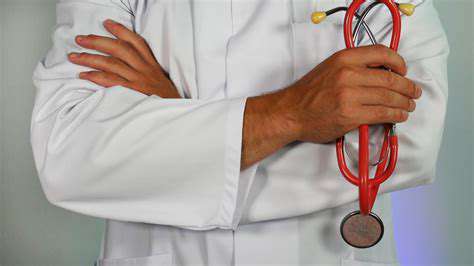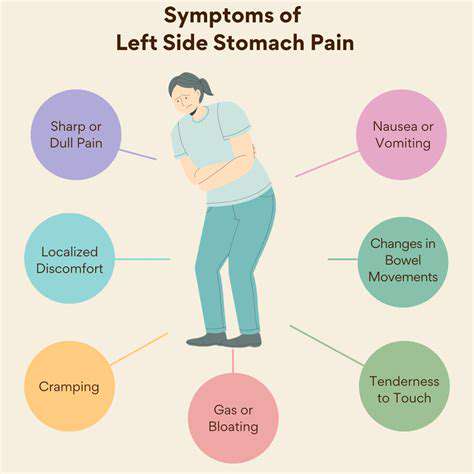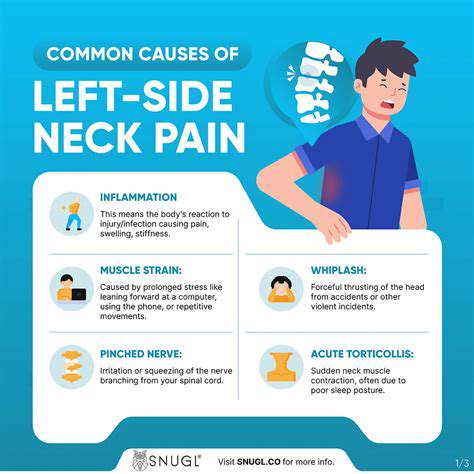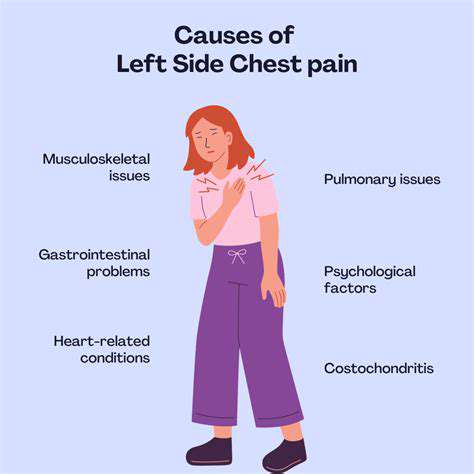Effective Pain Management Strategies for Chronic Pain Relief
Medications for Pain Relief
Types of Pain Medications
When it comes to managing chronic pain, various types of medications are available that target different pain mechanisms. Over-the-counter (OTC) medications, such as nonsteroidal anti-inflammatory drugs (NSAIDs) like ibuprofen and aspirin, provide relief for mild to moderate pain. These are often the first line of defense for many patients.
Prescription medications, including opioids, may be used for more severe pain situations, especially when other treatments have failed. Opioids act on specific receptors in the brain to reduce the perception of pain but come with a risk of addiction and side effects.
Adjuvant medications, including antidepressants and anticonvulsants, can also be effective for chronic pain. These medications can modify the nerve's processing of pain signals and are often used for conditions like fibromyalgia or neuropathic pain.
It is crucial for patients to work closely with healthcare providers to determine the most suitable type of medication based on their individual pain condition, medical history, and lifestyle factors.
Non-Pharmacological Approaches
In addition to medications, non-pharmacological approaches play a vital role in pain management. Physical therapy is one of the most effective techniques, helping patients improve mobility and strength through targeted exercises tailored to their specific needs.
Cognitive-behavioral therapy (CBT) is another valuable tool for alleviating chronic pain. CBT helps individuals develop coping strategies and change negative thought patterns associated with their pain experiences, ultimately improving emotional resilience.
Complementary therapies, such as acupuncture and massage therapy, can also offer substantial benefits. These practices help reduce muscle tension and improve circulation, which may alleviate pain and enhance overall well-being.
Mind-body interventions, including mindfulness meditation and yoga, are becoming increasingly popular. These practices not only reduce stress and promote relaxation but also empower individuals to take an active role in managing their pain.
Holistic and Integrative Approaches
Adopting a holistic approach to chronic pain management involves considering all aspects of a person’s health, including physical, mental, and social factors. Nutritional interventions play a key role, as certain foods can have anti-inflammatory properties that may help reduce pain levels.
Integrating lifestyle changes such as regular exercise, weight management, and adequate sleep can also significantly impact pain relief. Each of these elements contributes to maintaining a healthier body, which can make it easier to manage chronic pain effectively.
Alternative therapies, such as herbal supplements, are used widely, although patients should consult healthcare professionals before starting any new treatments due to potential interactions with prescribed medications.
Engagement in community support groups can provide emotional support and share experiences with others, creating a sense of belonging and understanding necessary for managing chronic pain.
Importance of a Multidisciplinary Approach
Managing chronic pain effectively often requires a multidisciplinary approach. Collaboration among healthcare professionals, including pain specialists, physical therapists, psychologists, and nutritionists, enhances the treatment process by pooling diverse expertise and perspectives.
This teamwork allows for a more personalized treatment plan that can address not only the physical aspects of pain but also psychological and social dimensions, which are equally important.
Regular follow-ups and assessments by the entire healthcare team ensure that the treatment plan stays relevant and effective, adapting to the patient's evolving conditions and needs.
Additionally, educational programs for patients and families about chronic pain can empower them to understand the condition better and encourage proactive participation in their pain management strategies.
Emerging Trends in Pain Management
As our understanding of chronic pain evolves, so do the treatment approaches. Research is continuously uncovering new options, such as neuromodulation techniques that involve altering nerve activity through stimulation, showing promise in managing conditions that have been resistant to traditional therapies.
Telemedicine is also reshaping the landscape of pain management. It offers patients access to specialists without the need for travel, making it easier for those with mobility issues or living in rural areas to receive care.
In addition, advancements in personalized medicine allow for treatments tailored specifically to an individual's genetic and biochemical makeup, leading to improved outcomes in pain management.
Finally, increased focus on mental health's role in chronic pain has led to more integrated treatment options combining psychological therapies with pain management strategies, fostering a more comprehensive approach that addresses the whole person.
Physical Therapy and Rehabilitation
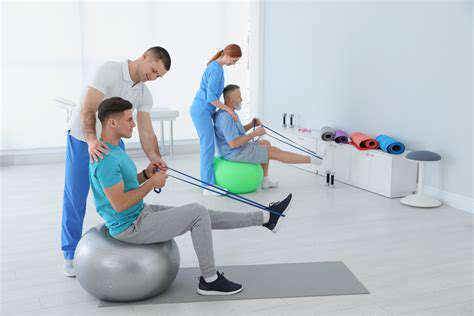
Understanding Physical Therapy
Physical therapy is a treatment approach that involves a variety of techniques to help individuals regain mobility and reduce pain. It is often tailored to meet individual needs and can address the specific sources of chronic pain.
By combining strength training, stretching, and manual therapy, physical therapists can help improve overall function while alleviating discomfort. This holistic approach can lead to long-term benefits for those suffering from chronic pain conditions.
Techniques Used in Physical Therapy
Physical therapists use a range of techniques such as exercises, heat and cold therapies, and electrical stimulation to help manage pain. These methods aim to reduce inflammation, strengthen muscles, and improve circulation.
Regular sessions can promote healing while teaching patients how to manage their pain through at-home exercises. Understanding these techniques is crucial for patients seeking to enhance their recovery process.
The Role of Exercise in Pain Relief
Exercise is a cornerstone of physical therapy and is essential in managing chronic pain. Engaging in regular, low-impact activities can strengthen the body and increase flexibility, which in turn can help alleviate pain levels.
Incorporating exercises that focus on posture and core strength can provide significant pain relief for many individuals. It is important to approach exercise with a mindset of gradual improvement to see the best results.
Setting Realistic Goals for Recovery
Setting achievable goals in physical therapy is vital for progress. Patients should work closely with their therapists to determine what is realistic based on their unique circumstances and pain levels.
Realistic goal-setting helps maintain motivation and can lead to a greater sense of accomplishment as patients see their condition improve over time. This collaborative approach fosters a productive therapeutic relationship.
The Importance of Consistency
Consistency in physical therapy sessions is key to effective pain management. Attending sessions regularly and adhering to prescribed home exercise programs ensures that patients make steady progress toward their goals.
When patients prioritize consistency, they often experience a reduction in pain and an enhancement in their quality of life. Developing a routine can significantly contribute to long-term success in managing chronic pain.
Lifestyle Changes for Pain Management
Dietary Adjustments for Pain Relief
Nutrition plays a critical role in managing chronic pain. Certain foods have anti-inflammatory properties that may help alleviate pain symptoms. Incorporating fruits, vegetables, whole grains, and healthy fats can provide essential nutrients that support overall health.
Omega-3 fatty acids, found in fish like salmon and seeds such as flaxseed, are particularly beneficial due to their anti-inflammatory effects. These elements can play a supportive role in reducing the intensity and frequency of pain episodes.
Additionally, avoiding processed foods, excess sugar, and refined carbohydrates can help minimize inflammation within the body. A well-balanced diet tailored to individual needs can significantly impact pain management outcomes.
Physical Activity and Exercise Protocols
Engaging in regular physical activity is crucial for those dealing with chronic pain. Gentle exercises such as walking, swimming, or yoga can promote flexibility and strength without putting undue strain on the body. These activities also release endorphins, natural pain-relief hormones that improve overall mood.
It’s essential to establish an exercise routine that is manageable and aligns with one’s physical capabilities. Consulting with a physical therapist can provide guidance on appropriate exercises that promote pain relief while preventing injury.
Consistency is key in exercise regimens. Even short, daily activities can yield significant improvements in pain management and enhance quality of life over time.
Stress Management Techniques
Chronic pain often coexists with stress, which can exacerbate pain symptoms. Implementing stress management techniques such as mindfulness, meditation, and deep breathing exercises can create a positive cycle of relaxation and pain relief.
Additionally, hobbies that promote relaxation, such as painting, gardening, or reading, can serve as effective distractions from pain, reducing the perception of discomfort.
Regular practice of stress management techniques can lead to a more comprehensive approach to pain management, ultimately fostering resilience in facing chronic pain challenges.
Alternative Treatments and Therapies
Complementary Therapies
Complementary therapies encompass a variety of approaches that can support traditional medical treatments in managing chronic pain. These can include practices such as acupuncture, massage therapy, and chiropractic care. Acupuncture, an ancient Chinese technique, involves inserting thin needles into specific points on the body to relieve pain and promote healing. Many patients report significant reductions in pain levels and improved overall well-being following these complementary methods.
Massage therapy offers another avenue for pain management by targeting tense muscles and improving circulation. Techniques such as deep tissue massage and myofascial release can be particularly beneficial for chronic pain sufferers. Incorporating these therapies into a comprehensive pain management plan often results in enhanced relief and a better quality of life.
Mind-Body Connection
The mind-body connection plays a crucial role in how individuals experience and manage pain. Techniques such as mindfulness meditation, yoga, and guided imagery can help patients cultivate awareness and reduce the emotional impact of chronic pain. Mindfulness meditation encourages individuals to focus on their breath and observe their thoughts and sensations without judgment, often resulting in decreased stress and improved pain perception.
Yoga combines physical postures, breathing exercises, and meditation, making it a holistic approach to pain relief. Gentle yoga practices can increase flexibility, strengthen muscles, and promote relaxation, which are essential for managing chronic pain conditions. When practiced regularly, these mind-body techniques can transform how individuals cope with pain and enhance their overall emotional well-being.
Diet and Nutritional Support
Diet plays a significant role in managing chronic pain, as certain foods can either exacerbate or alleviate inflammation in the body. Incorporating anti-inflammatory foods, such as fatty fish, nuts, fruits, and vegetables, can help reduce pain and improve overall health. Omega-3 fatty acids, found in foods like salmon and walnuts, are known for their anti-inflammatory properties and can be vital in managing pain levels.
Moreover, maintaining proper hydration and ensuring adequate intake of vitamins and minerals also plays an essential part in pain management. Consulting with a nutritionist to develop a personalized dietary plan can empower individuals to take charge of their pain management journey. By being mindful of dietary choices, patients may find an improvement in their symptoms and an enhanced quality of life.
